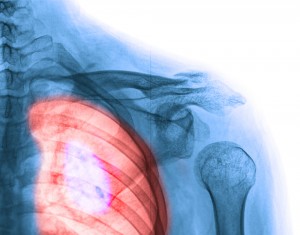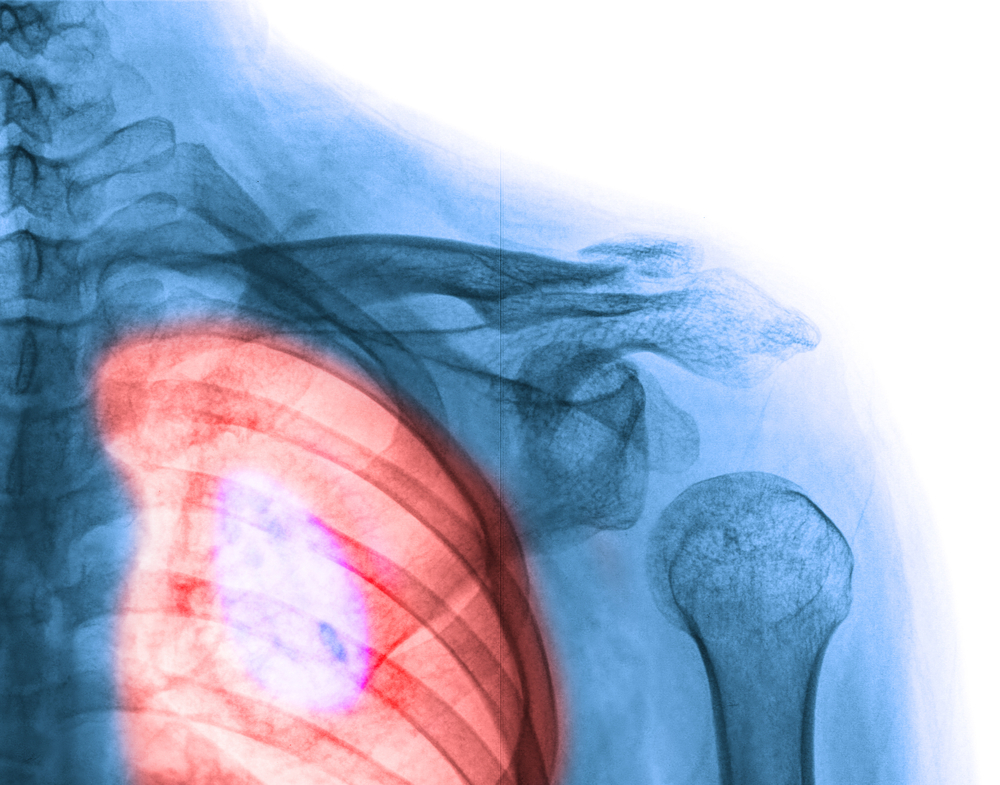 According to an abstract presented at the American Society for Radiation Oncology (ASTRO) 56th Annual Meeting in September, certain types of metastatic (stage IV) non-small cell lung cancers (NSCLC) can be eradicated with aggressive treatments and lead to a five-year overall survival rate of 47.8%. This figure is impressive, considering that survival is typically only a few months for stage IV lung cancer patients.
According to an abstract presented at the American Society for Radiation Oncology (ASTRO) 56th Annual Meeting in September, certain types of metastatic (stage IV) non-small cell lung cancers (NSCLC) can be eradicated with aggressive treatments and lead to a five-year overall survival rate of 47.8%. This figure is impressive, considering that survival is typically only a few months for stage IV lung cancer patients.
“Our study finds some stage IV NSCLC patients can achieve long-term survival after aggressive treatments,” said Allision Ashworth, MD, lead author of the abstract “An Individual Patient Data Meta-Analysis of Outcomes and Prognostic Factors after Treatment of Oligometastatic Non-Small Cell Lung Cancer.” “However, it is important to note that the patients in this study are a very select minority of stage IV patients who are younger, more physically fit, with a lower burden and slower pace of disease than the average stage IV patient,” she continued in a news release from ASTRO.
Dr. Ashworth and colleagues evaluated data from 757 stage IV NSCLC patients from 20 international hospitals who had received aggressive treatment for their cancer. Treatment included high-dose, precise radiotherapy known as stereotactic ablative radiotherapy (SABR) or surgical removal of between one and five metastatic deposits that had spread from other parts of the body, as well as treatment of the original lung tumor.
Patients who had only a few sites of metastases that were removed by the aggressive treatments had high overall survival rates. The chance of treatment success increased dependent on the time of metastasis (synchronous or metachronous), lymph node involvement, and cancer subtype.
The team was interested in developing a risk classification scheme to stratify patients into treatments to improve the chances of survival. Three risk groups were formed: low risk patients (146 our of 757), intermediate-risk patients (201 our of 757), and high-risk patients (184 out of 757). Low-risk patients survived longest, with a five year overall survival of 47.8%, and had metachronous (developing after the original tumor) metastases. Intermediate patients had a lower overall survival–36.2%–and showed no signs of lymph node involvement, with synchronous (developing with the original tumor) metastases. High-risk patients had the worst overall survival of 13.8%, and they had synchronous metastases and evidence of chest lymph node involvement.
“We hope our study’s results will help determine which stage IV NSCLC patients are most likely to benefit from aggressive treatments, and equally as important, help identify those patients most likely to fail, thus sparing them from futile and potentially harmful treatments,” said Dr. Ashworth. “Our research, however, cannot answer the question of whether the longer survival is due to the treatments or simply because these patients have less aggressive disease.”
Future work must be completed to delineate these options. “We must await the results of randomized clinical trials to answer this question,” stated Dr. Ashworth. “In the meantime, it is our hope that our study will help cancer specialists in making treatment decisions and in the development of clinical trials.”


